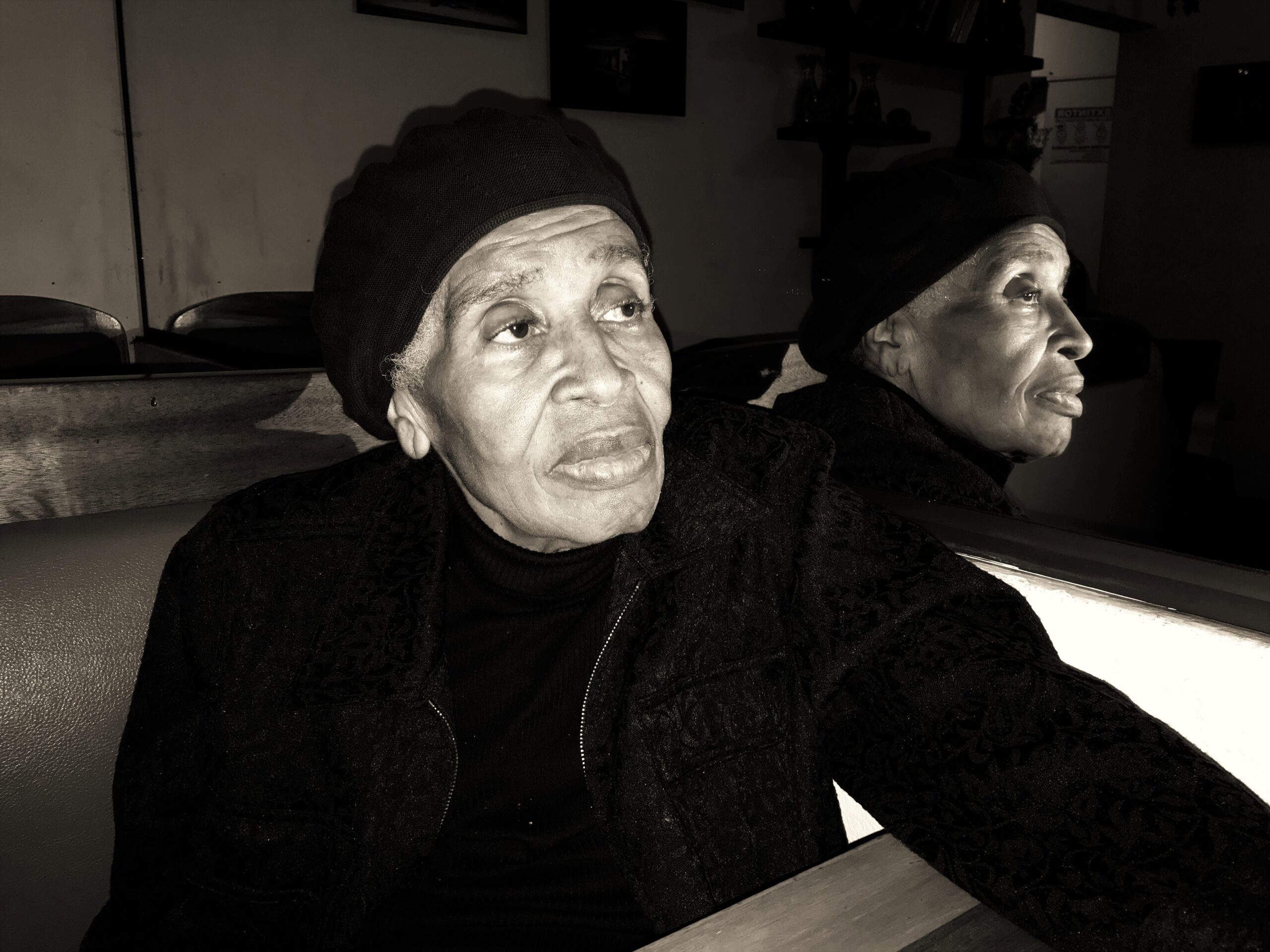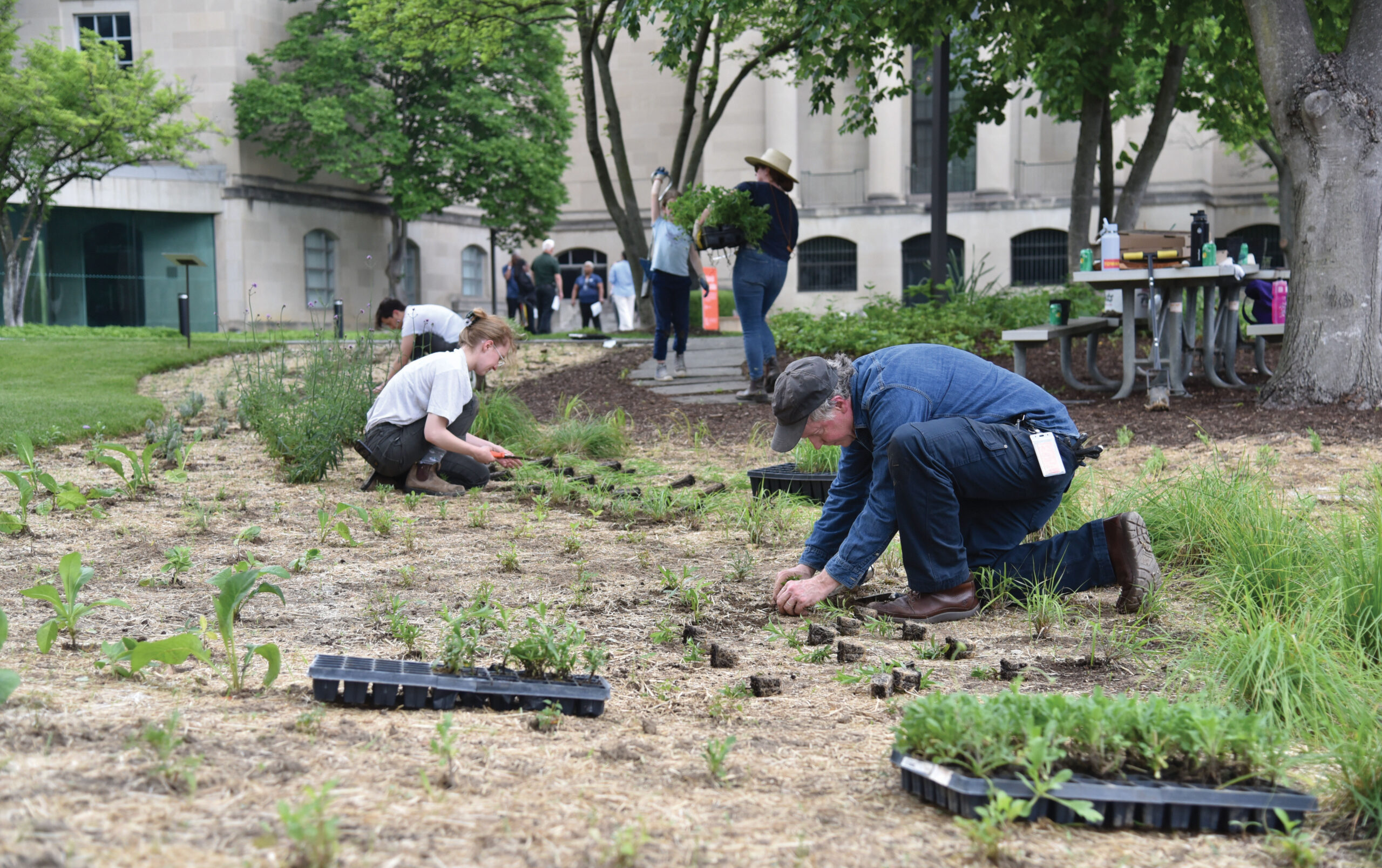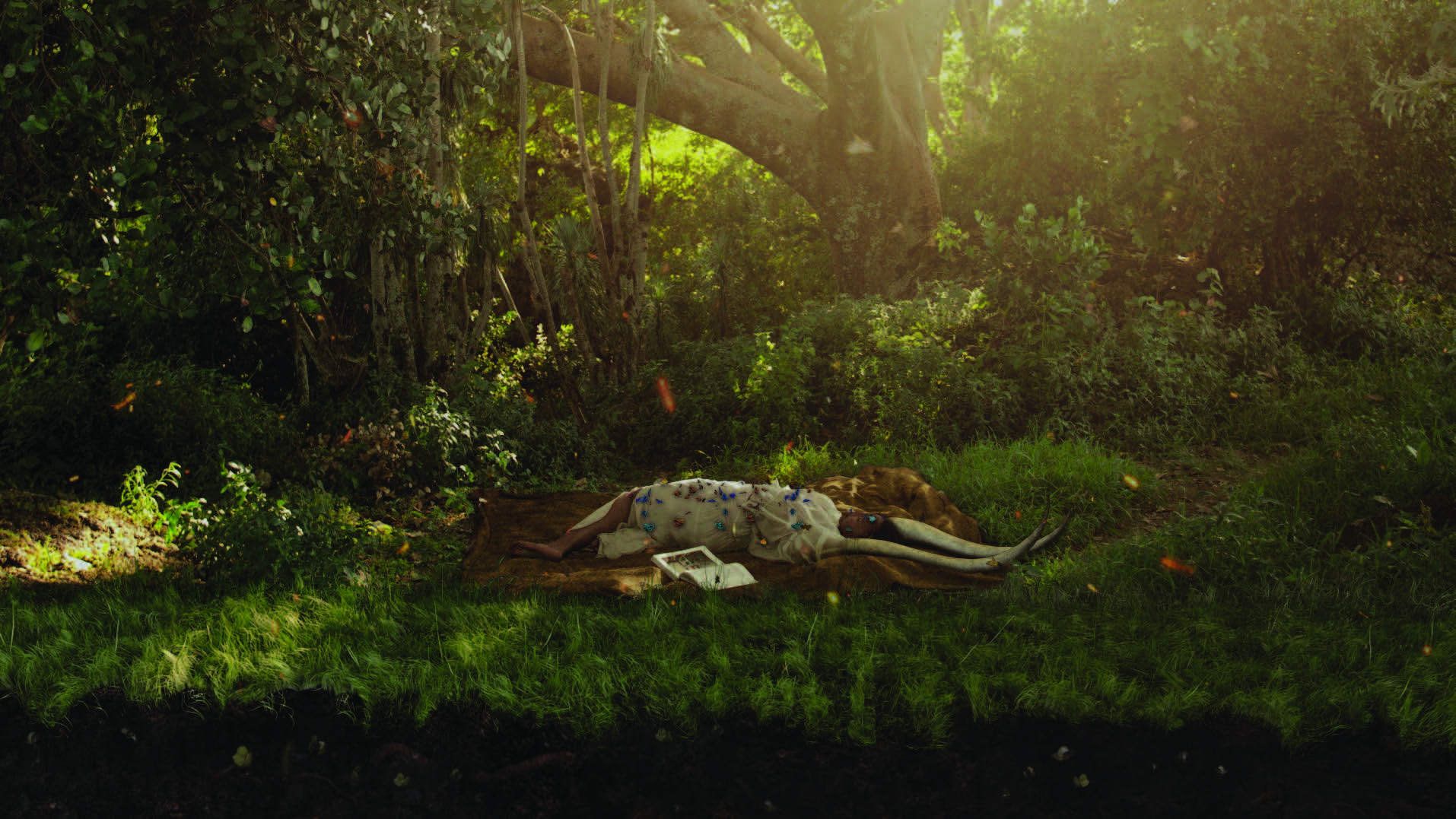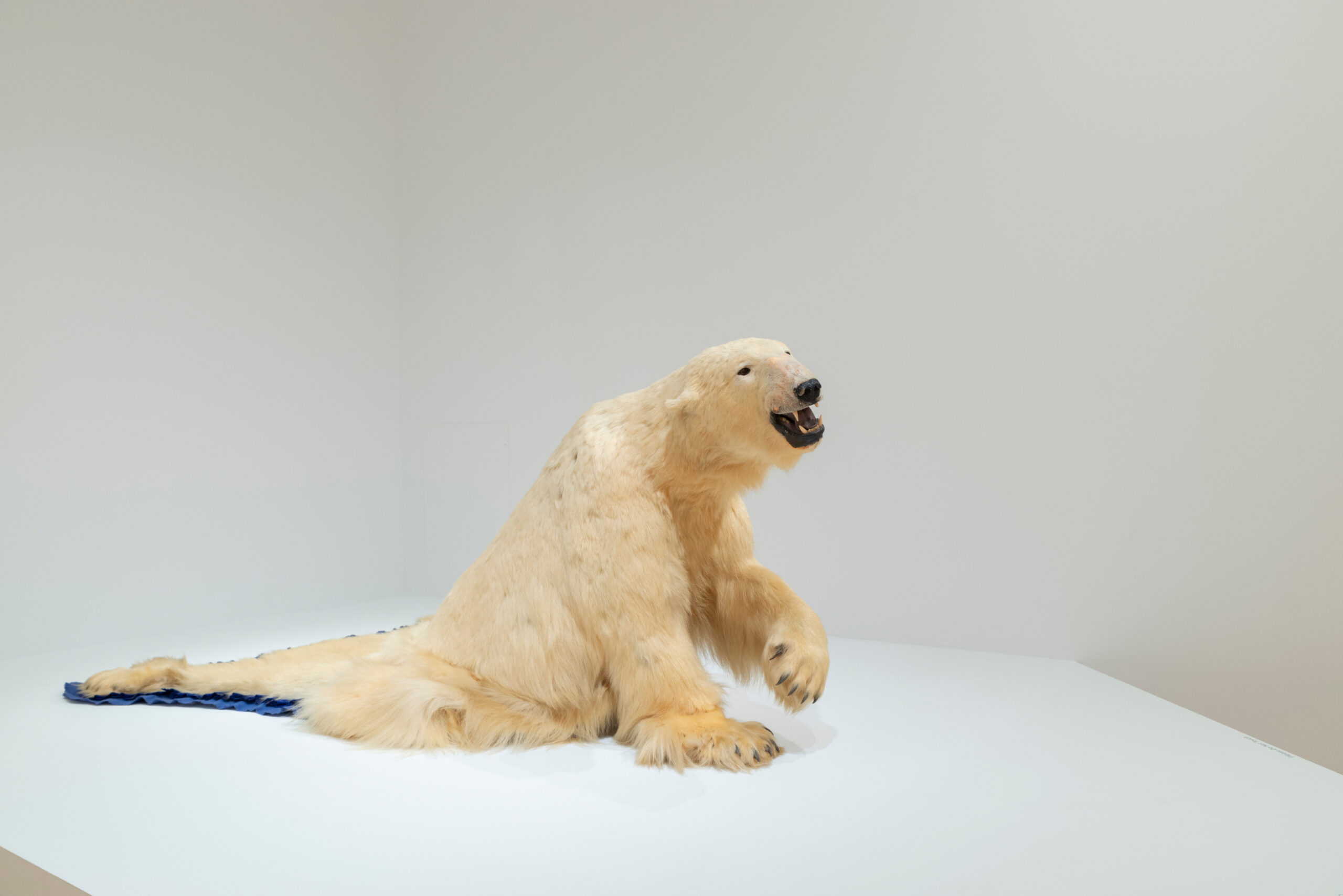
For the fall 2024 semester, the BMA welcomed a graduate cohort in curatorial practice from the Maryland Institute College of Art to center a seminar class on a careful examination of the Preoccupied: Indigenizing the Museum initiative. To learn about the diverse contributions needed to realize this expansive project, students convened weekly with a wide range of BMA staff from many departments. Over repeated visits to the exhibitions, students met with staff members focused on community engagement, conservation, fundraising, marketing, publications, graphic design, label writing, registration, installation, and more. As the students became immersed in the granular details of Preoccupied, we asked that they share a response to any aspect of the initiative that felt compelling to them. The essays reflect the dexterity of the students in synthesizing Preoccupied’s broader concerns—sometimes relating them to their own research interests and at other times thinking deeply and critically about the artworks and concepts at hand.
We are pleased to publish Sara Staup’s essay below.
As I walked through and experienced the Preoccupied: Indigenizing the Museum initiative at the BMA, many themes stood out to me. The concepts of home, family, and our connections to each other and to the earth have felt notable to me. These notions got me thinking about my connection to the Pacific Northwest, where I grew up and lived for most of my life until I recently moved here to Baltimore. Some of the artworks that reminded me most of home came from Nicholas Galanin’s (Lingít and Unangax̂) exhibition, Exist in the Width of a Knife’s Edge. The first piece that stood out to me was We Dreamt Deaf, in which a massive taxidermied polar bear seems to emerge from the floor as though pulling himself out of the water and onto an ice sheet. Or maybe this polar bear is melting into the floor like the ice rapidly melting in its natural habitat, but I like to think that he’s rising up in spite of everything.
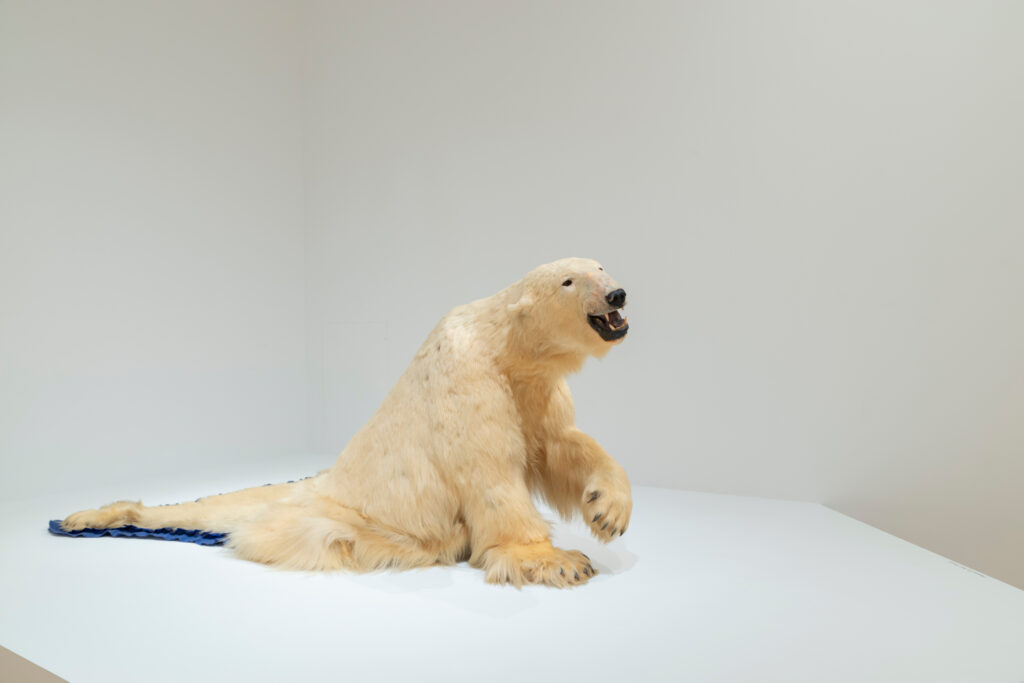
The second of Galanin’s pieces I keep thinking about is Infinite Weight, which displays a taxidermied wolf suspended upside down from the ceiling, standing stoically over visitors’ heads. On the wall beneath the wolf, a screen shows a time-lapse video of this wolf. It remains motionless on the shore of a lake at the base of towering Alaskan mountains; clouds and winds whip past. This scene reminded me of when I was little and learned about the wolf population of central and eastern Washington state. In these regions, these wolves were hunted nearly to extinction in the 1930s during the coal-mining boom, and their numbers started slowly increasing only in 2008. I remember hearing people discuss the potential ramifications of this trend: Would livestock farmers and their herds suffer? Would it be unethical to “remove” these young packs? One critical fact remained regardless of the discourse: the wolves in eastern Washington would continue to survive and thrive. During my visits to Preoccupied, I found myself thinking frequently about Galanin’s wolf through the lens of my own experiences of learning about the wolves in Washington. To me, Infinite Weight represents how animals can persevere despite the many humans’ efforts throughout history to control and manipulate nature.
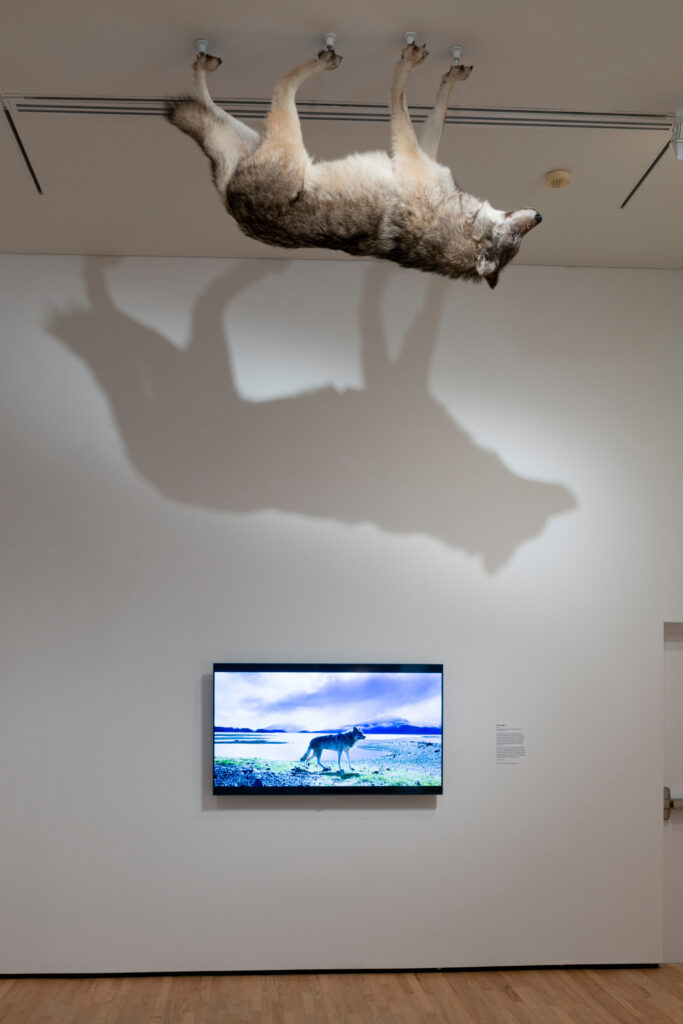
I grew up just outside of Seattle, and the local wildlife and landscape have always played a huge role in my life. People joke that everyone from Washington wears fleece jackets and beanies and Birkenstocks with socks, ready to pack some trail mix and go hiking at a moment’s notice. This funny outdoorsy stereotype, of course, doesn’t reflect our true lives, but really can you blame us for wanting to experience the beautiful nature and wildlife all around us? All sorts of animals constantly traversed my backyard and my neighborhood. There were (are) deer, of course, and rabbits, but also coyotes, owls, beavers, eagles, bobcats, hawks, bears, and once even a cougar.
One time, the local wildlife control had to put a humane bear trap in our backyard because a large black bear had been spotted going through people’s garbage cans and hanging out on decks. When the wildlife control officers arrived, they showed my parents and me how they attached a bag of Dunkin’ Donuts to a cord at the back of the large metal, tube-shaped trap, which would shut when (realistically, if) the bear wandered in, drawn by the smell of fast food. Another time, my mother and I watched as a bobcat stalked through the bushes at the edge of our backyard, clearly hunting prey. The bobcat suddenly froze, almost like time had stopped. Slowly, it poised itself to leap, then in the blink of an eye it pounced, disappearing into the bushes. A few seconds later, it trotted out with a rabbit dangling from its mouth. At first, I was a little grossed out. But after a moment, I marveled at the incredible scene I had just witnessed. Bobcats are very private animals, and I had been immeasurably lucky that I just happened to be looking out a window at that moment.
When walking through the different parts of Preoccupied, I kept coming back to this same realization: how lucky we are to exist on this earth with such rich wildlife and nature all around us, no matter what part of the country we are in. Seeing the reverence and respect for animals and nature throughout Preoccupied reminded me that I am home wherever I go, as long as there is earth beneath my feet. More importantly, it’s a much-needed reminder to all institutions that there’s a wealth of knowledge and experience to learn from people and places—all over the continent—who have been routinely pushed out of the conversation.


